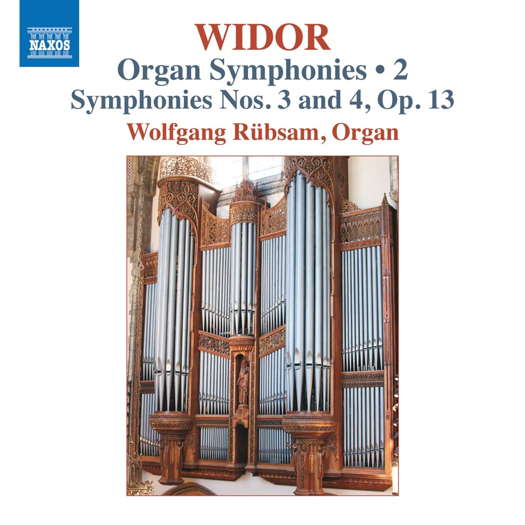 DISCUSSION: What is a work? John Dante Prevedini leads a discussion about The performing artist as co-creator, including contributions from Halida Dinova, Yekaterina Lebedeva, Béla Hartmann, David Arditti and Stephen Francis Vasta.
DISCUSSION: What is a work? John Dante Prevedini leads a discussion about The performing artist as co-creator, including contributions from Halida Dinova, Yekaterina Lebedeva, Béla Hartmann, David Arditti and Stephen Francis Vasta.

Incandescent
GERALD FENECH listens to the second Naxos disc
of Charles-Marie Widor's organ symphonies
'Wolfgang Rübsam provides irrepressible playing in these two early but much enterprising works.'
The career of Charles-Marie Widor (1844-1937) is one of those unfortunate episodes in French music history that nobody desires to be part of. Hugely influential and respected in his time, he is, nowadays, only associated with the organ, and to make matters worse, Widor's extensive oeuvre for the instrument barely makes a bow in the concert hall. All that one hopes to hear today are only a handful of movements from his ten symphonies, considered to be the composer's opus magnum.
How is it then, that while Widor is effectively still a household name, we actually know very little about him and his musical significance, and only a few of his works are really known? Part of the answer may be in the fact that, while his works are beautifully profound, especially those for the organ, his musical expression does not reveal itself on first hearing. Also, many of Widor's movements are far from easy to play, given their technical difficulties and complex textures.
Throughout a long career of more than sixty years, he built a staggering catalogue that includes piano, chamber, orchestral, ballet and operatic music, apart from a substantial number of pieces for the organ. Widor's ten organ symphonies are undoubtedly central in his repertoire for the instrument and within them one can discern a constant process of development. In the Op 13 works on this disc one notices neo-classical tendencies and elements that resemble character pieces which later become more virtuosic, bound in formal terms by a large-scale symphonic language.
In the process, Widor was constantly searching for a better overall sound and feel for his symphonies, and this desire resulted in his subjecting these works to ongoing revisions. Regrettably, not all of his handwritten marks from his own personal copies, which he used in performance, have been included in subsequent publications. The spectacular symphonies on this issue are in the grand Romantic style, but Widor was also keenly aware of his musical ancestry, going back to music of the past such as J S Bach's St Matthew Passion in the opening Prélude of the Third Symphony.
Listen — Widor: Prélude (Symphony No 3 in E minor, Op 13 No 3)
(track 1, 2:53-3:41) © 2020 Naxos Rights (Europe) Ltd :
The 'Scherzo' of the Fourth is one of the composer's finest symphonic movements, exploring the organ's sonic beauties to the full.
Listen — Widor: Scherzo (Symphony No 4 in F minor, Op 13 No 4)
(track 10, 0:00-0:45) © 2020 Naxos Rights (Europe) Ltd :
The original E major 'Scherzo' from the Second, which is an added bonus on this CD, was subsequently replaced with a 'Salve Regina'.
Listen — Widor: Scherzo (Symphony No 2 in D, Op 13 No 2)
(track 6, 0:00-0:57) © 2020 Naxos Rights (Europe) Ltd :
Sadly, Widor's Op 13 remains, and unfairly so, undervalued. So, hopefully, this second volume in Naxos' ongoing cycle of these works will generate new interest in a genre that has been neglected for too long, and put Widor in the place he so richly deserves. Wolfgang Rübsam provides irrepressible playing in these two early but much enterprising works. His interpretations are full of rhythmic vitality, and the 'Scherzo' of the Fourth is a real edge-of-the-seat experience. The sound of the E M Skinner organ at Chicago University is incandescent.
Copyright © 2 June 2020
Gerald Fenech,
Gzira, Malta

CD INFORMATION: WIDOR ORGAN SYMPHONIES 2
FURTHER INFORMATION: CHARLES-MARIE WIDOR
FURTHER ARTICLES FEATURING ORGAN MUSIC




